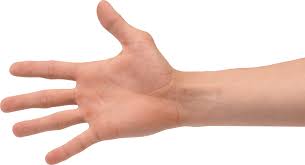Do you want BuboFlash to help you learning these things? Or do you want to add or correct something? Click here to log in or create user.
#has-images #microscopio-session #reading-mano


Microeconomics classifies private economic units into two groups: consumers (or households) and firms. These two groups give rise, respectively, to the theory of the consumer and the theory of the firm as two branches of study. The theory of the consumer deals with consumption (the demand for goods and services) by utility-maximizing individuals (i.e., individuals who make decisions that maximize the satisfaction received from present and future consumption). The theory of the firm deals with the supply of goods and services by profit-maximizing firms.
If you want to change selection, open original toplevel document below and click on "Move attachment"
ional income, and is rooted in microeconomics , which deals with markets and decision making of individual economic units, including consumers and businesses. Microeconomics is a logical starting point for the study of economics. <span>Microeconomics classifies private economic units into two groups: consumers (or households) and firms. These two groups give rise, respectively, to the theory of the consumer and the theory of the firm as two branches of study. The theory of the consumer deals with consumption (the demand for goods and services) by utility-maximizing individuals (i.e., individuals who make decisions that maximize the satisfaction received from present and future consumption). The theory of the firm deals with the supply of goods and services by profit-maximizing firms. It is expected that candidates will be familiar with the basic concepts of demand and supply. This material is covered in detail in the recommended prerequisite readings.
In a general sense, economics is the study of production, distribution, and consumption and can be divided into two broad areas of study: macroeconomics and microeconomics. Macroeconomics deals with aggregate economic quantities, such as national output and national income, and is rooted in microeconomics , which deals with markets and decision making of individual economic units, including consumers and businesses. Microeconomics is a logical starting point for the study of economics. Microeconomics classifies private economic units into two groups: consumers (or households) and firms. These two groups give rise, respectively, to the theory of the consumer and the theory of the firm as two branches of study. The theory of the consumer deals with consumption (the demand for goods and services) by utility-maximizing individuals (i.e., individuals who make decisions that maximize the satisfaction received from present and future consumption). The theory of the firm deals with the supply of goods and services by profit-maximizing firms. It is expected that candidates will be familiar with the basic concepts of demand and supply. This material is covered in detail in the recommended prerequisite readings. I
Parent (intermediate) annotation
Open itional income, and is rooted in microeconomics , which deals with markets and decision making of individual economic units, including consumers and businesses. Microeconomics is a logical starting point for the study of economics. <span>Microeconomics classifies private economic units into two groups: consumers (or households) and firms. These two groups give rise, respectively, to the theory of the consumer and the theory of the firm as two branches of study. The theory of the consumer deals with consumption (the demand for goods and services) by utility-maximizing individuals (i.e., individuals who make decisions that maximize the satisfaction received from present and future consumption). The theory of the firm deals with the supply of goods and services by profit-maximizing firms. It is expected that candidates will be familiar with the basic concepts of demand and supply. This material is covered in detail in the recommended prerequisite readings.
Original toplevel document
Reading 14 Topics in Demand and Supply AnalysisIn a general sense, economics is the study of production, distribution, and consumption and can be divided into two broad areas of study: macroeconomics and microeconomics. Macroeconomics deals with aggregate economic quantities, such as national output and national income, and is rooted in microeconomics , which deals with markets and decision making of individual economic units, including consumers and businesses. Microeconomics is a logical starting point for the study of economics. Microeconomics classifies private economic units into two groups: consumers (or households) and firms. These two groups give rise, respectively, to the theory of the consumer and the theory of the firm as two branches of study. The theory of the consumer deals with consumption (the demand for goods and services) by utility-maximizing individuals (i.e., individuals who make decisions that maximize the satisfaction received from present and future consumption). The theory of the firm deals with the supply of goods and services by profit-maximizing firms. It is expected that candidates will be familiar with the basic concepts of demand and supply. This material is covered in detail in the recommended prerequisite readings. I
Summary
| status | not read | reprioritisations | ||
|---|---|---|---|---|
| last reprioritisation on | suggested re-reading day | |||
| started reading on | finished reading on |
Details
Discussion
Do you want to join discussion? Click here to log in or create user.